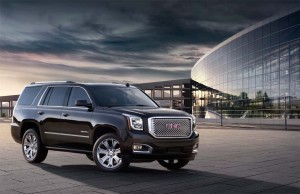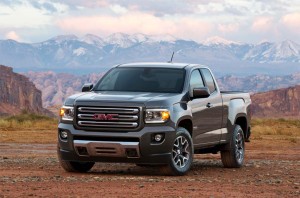With its distinctive grille, hand-stitched interior details and such high-tech features as a magnetically controlled suspension system, the newly redesigned 2015 Yukon Denali offers buyers a way to step up from the more conventional version of GMC’s full-size Yukon sport-utility vehicle.
For parent General Motors, meanwhile, the Denali offers a way to make even more substantial profits in a market segment it overwhelmingly dominates.
The GMC brand has been one of the surprise success stories for GM. It’s now the tenth-largest U.S. automotive brand, and saw sales surge by 9% last year. But the real success story is GMC’s brand-within-a-brand, Denali, which last year gained grew by roughly 20%, and which has more than doubled in volume since just 2010.
That’s all the more impressive considering the various Denali models have not benefited from any major marketing push. While GMC is a frequent presence on TV, there’ve been no commercials specifically focusing on the high-line nameplate. “It’s largely all been organic,” suggests GMC marketing director Roger McCormack.
However it’s happening, it’s good news for parent General Motors, suggests Joe Phillippi, head of AutoTrends Consulting. Full-size SUVs deliver some of the largest margins of any vehicles GM offers, he says, pushing well into four-digit territory on some well-equipped models. The average customer will likely push up and above $70,000 for a 2015 Yukon Denali XL which, says Phillippi, “epitomizes the concept of obscene profitability.”
The Yukon Denali is the near-twin of the Chevrolet Tahoe. And the two full-size SUVs in turn share their underpinnings – albeit none of their sheet metal – with the new –for-2014 GMC Sierra and Chevrolet Silverado full-size pickups.
GMC has been targeting what it calls “professional grade” buyers who want something a little more bold and lavish than the workman models of Chevrolet. In turn, Denali takes things a step further with an even more upscale appearance, inside and out, along with enough unique features to help justify the higher price tag.
On the 2015 GMC Yukon Denali, for example, that includes a 6.2-liter V-8, the magnetic ride control suspension, unique seats and interior materials, HID headlamps, a Head-Up Display, illuminuated power-retractable steps, active interior noise control and 22-inch tires, among other things.
Those features are expected to draw an average buyer that’s several years younger, at around 44 years of age, and more affluent, with a household income pushing to $134,000, for the big ute. There’s also a higher level of professionals and business owners than the comparable GMC offering.
(Tesla megafactory deal could slash battery costs for EVs. For more, Click Here.)
If anything, Denali has been able to attract the sort of buyer who might otherwise opt for an import product, GMC officials note.
“The Denali customer is naturally attracted to the best of the best in whatever they’re buying,” contends marketing chief McCormack.
(Click Here to see what vehicles topped Consumer Reports’ top vehicles list.)
While the GMC brand has been around for more than a century, Denali is a relative newcomer, the name being bolted onto the back of a well-equipped Yukon for the first time in 1999. Today, there are Denali versions of every GMC product line, from the compact Terrain crossover-utility vehicle up to the big Sierra HD heavy-duty pickup.
The growth in the model range is part of the reason why sales have surged from just 32,886 in 2010 to 75,558 last year.
(To get more details about GM’s expanded ignition switch recall, Click Here.)
What about the new midsize GMC Canyon pickup coming to market later this year – will there be a Denali version, too? “Not out of the chute,” McCormack cautions. But while he won’t comment on future product, buyers can all but bank on seeing a Denali edition follow.
Considering the way Denali has been drawing buyers, it would be hard to imagine GMC would miss another big opportunity.


